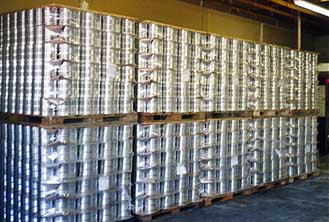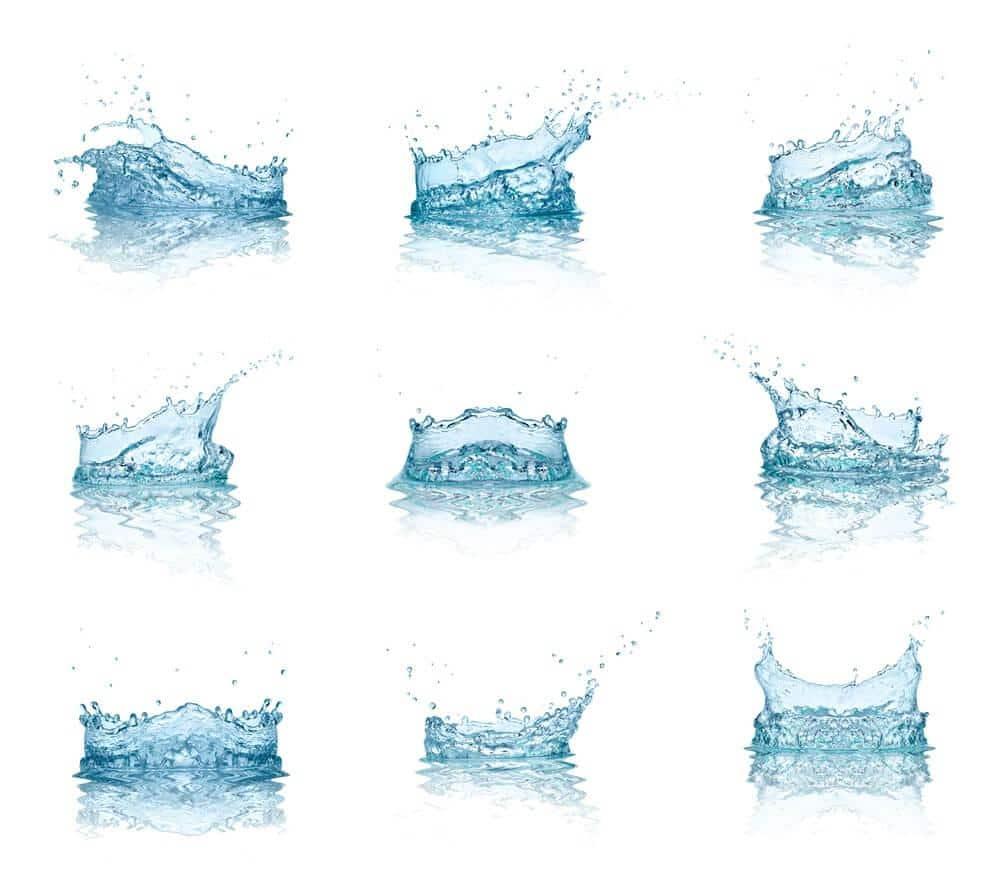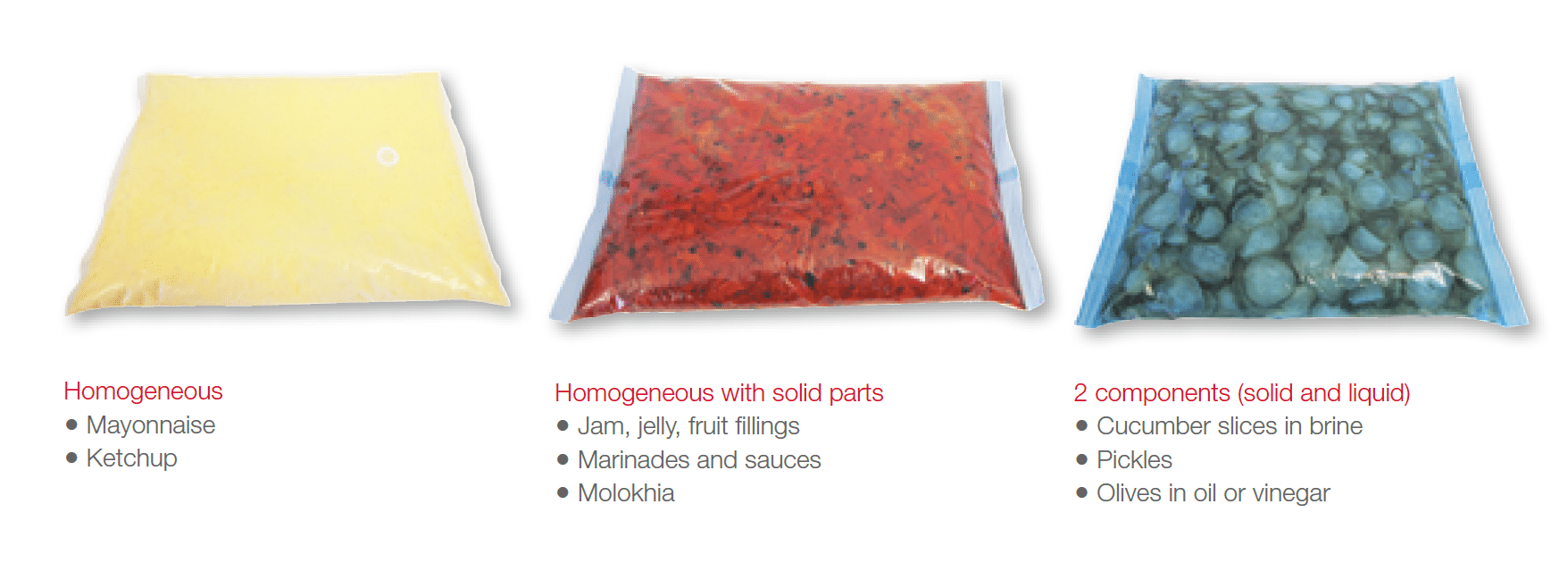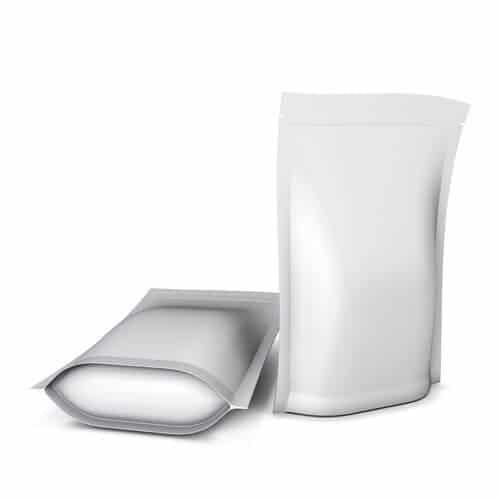Source Reduction in Liquid Packaging – VFFS Solutions
Waste not, want not! I’ve grown up hearing that, whether it’s because I needed to eat the vegetables on my plate or because I wanted to throw away a...
5 min read
 John Panaseny
:
Tue, Nov 28, 2023
John Panaseny
:
Tue, Nov 28, 2023

It's no secret that one of the biggest trends in the packaging industry has been moving from rigid to flexible packaging. Walking through the grocery store a year ago (much less 10 years ago) provides a completely different view today that has nothing to do with product - it's the package!
For a more microscopic inspection, what does this trend mean for stand up pouch or pillow bag vs. metal cans or glass jars? How does switching packaging methods benefit both consumers and manufacturers?
In February of 2016, the Fredonia Group estimated in study #3383 that by 2020 the demand for pouches would grow 4.4% to 10.1 billion in the US. The metal can market, however, was expected to experience a slower growth of 2%. While 4.4% is an impressive CAGR, the actual popularity of stand up pouches from 2016 to 2020 blew past those estimations. According to this report from February of 2021, the stand up pouch market in North America is projected to exhibit a CAGR of more than 6% between now and 2027.
The CAGR of flexible packaging continues to greatly outpace that of rigid packaging options.
Whether it is switching a #10 can of soup or sauce to a pillow bag made by a liquid bagger or converting a can of nuts into stand up pouches made by a stand up pouch packaging machine, the appeal is becoming more prevalent. Before we dive into the five major reasons producers are switching to flexible packaging vs rigid packaging, let's walk through the difference between the two.
Flexible packaging consists of materials that offer easy manipulation, whether they are empty or filled. These materials, commonly known as films, can be crafted from a diverse range of substrates, including low density plastics, papers, metals, and often combinations of these materials.
What sets flexible packaging apart is its remarkable lightweight nature while still maintaining impressive durability. It can withstand the rigors of jostling during long-distance transportation, as well as cope with any temperature or pressure changes that may occur.
Rigid packaging, as its name suggests, is not easily manipulated and can be irreparable if it is dropped or exposed to extreme temperature or pressure changes.
Typically made from rigid plastics like high-density polyethylene or coated metals or glass, metal cans or rigid plastic containers are lighter than glass jars but still significantly heavier than flexible packages of the same product volume.
Ultimately, the primary purpose of packaging, whether it's flexible or rigid, is to safeguard our products. In the past, rigid packaging was deemed necessary to provide adequate protection for certain items such as sauces, soups, and other liquid products.
However, with advancements in film and packaging machinery technology, this is no longer the case. The transition to flexible packaging has brought about numerous benefits, significantly enhancing the efficiency and overall consumer experience across various product categories.
Waste reduction is a top priority for businesses across various industries. It not only helps cut costs but also has a positive impact on the environment and the economy as a whole. When it comes to sustainable packaging, the pouch truly shines in terms of waste reduction. A recent study conducted by Fres-co compared the #10 can of tomato paste to a pouch and found that switching to the pouch resulted in an impressive 85% reduction in waste for primary packaging. Just imagine the potential waste reduction if this comparison had been made with a glass jar as well!
But the benefits of waste reduction don't stop there. Transitioning to a pillow bag or stand-up pouch also leads to decreased waste in other areas such as fuel, start-up materials, landfill space, and storage space. Speaking of storage space, this brings us to the second reason why flexible packaging makes more sense than using cans or jars.
To give you an idea of the amount of space that can be saved, Liquiflex informs us that 98 pallets of cans is equal to 1 pallet of film. Storage space is a constant issue with warehouses and manufacturing plants. Can you imagine providing this solution to your team who is stressed because lack of space prevents them from completing goals, starting on production, or ordering material they need?
The consumer also benefits from this space-savings. The flexibility of the pouch and lighter weight allows more of the packaged product to be stored in the desired location.
We are becoming more aware of the environment and concerned about the impact we have on this world. We not only want to be more environmentally conscientious, but we are also increasingly required by the government to include environmentally friendly policies in our programs. Because the can is recyclable, it is a common misconception that it is the green way to go. This is simply not the case. Waste reduction causes the pouch to be more environmentally friendly. The Fres-co case study informs us that:
"Assuming that cans are recycled at a rate of 62%, laminate pouches are recycled at a rate of 0%, and the secondary package in this case is recycled at 70%; there is a total packaging material reduction of 40%, or 4,689 lbs of packaging per 100,000 lbs of product. As a result, the weight of packaging sent to landfill gets reduced by 27%.....despite the recycling rates, the pouch is so much lighter than the can, that the latter cannot offset the significant source reduction of the former."
As we age, healthy eating becomes more and more of a priority. Millenials are reaching their prime spending years, as they build careers and families. According to Bruce Horowitz of USA today, the younger generations are more concerned about eating organic, preservatives in food, and ingredients. So concerned, in fact, that they are willing to spend more money on eating healthier.
Health issues with use of the metal #10 can is mostly focused on the use of BPA (Bisphenol A). The Mayo Clinic explains that BPA has been linked to a variety of negative health effects. They actually recommend avoiding canned foods! As a result of health issues, many companies, like Campbell Soup are moving away from BPA lined cans. Many, however, are still manufacturing with BPA and the consumer may have no way of knowing if the metal can contains BPA or not.
This chemical is not the only concern. The thin layer used to line the cans can still be compromised, especially with acidic food. This may cause leakage of the tin or aluminum into the food. Contamination could lead to gastrointestinal and neurological health problems. And let's not forget that once the can is open, it's even more possible for the metal to leak into the food.
Health and food blogs and articles such as those written by Anne's Healthy Kitchen, Women's Health, and many more also espouse the idea of avoiding food in metal cans. Word is getting around and to make an impact, we need to listen to what is being spread by and to consumers as well as noting the lifestyle habits of the Millennials and Generation Z and incorporate it into our packaging.
From time to time my mind fills with the idea of a meteoric or apocalyptic event that could happen. Usually after reading a book or watching a movie with this theme. There are many reasons to want to buy food with a longer shelf life but fear of an apocalypse does it for me. So how does a pouch fare next to a can when comparing life cycle?
A common myth is that the can offers a longer shelf life then the pouch. Not true. The shelf life of food in a can is typically 2-5 year (less for some products) according to Brian A. Nummer, PhD and Brandon Jahner. This is not because the food will spoil, but because the metal is more likely to transfer into the food after this date. The longest tested shelf life for packaging actually comes from a pouch. Think military MRE (Meal, Ready To Eat). This pouch has a shelf life of 8-10 years. Currently, no packaging solution is recommended for over that amount.
While metal cans are beneficial for some consumers and manufacturers, transferring from a metal container to a pouch as a solution to these important issues is not only viable, but it makes sense. And off the top of my head, I can think of a few other smaller issues it solves. The pillow bag or stand up pouches can be microwaveable - the can can't. (Catchy slogan!) The pouch can be frozen - not the can. For those world travelers, the pouch can be duty-free but not the can. What do you think? I'd love to know any other solutions you can come up with or your thoughts on this trend?

Waste not, want not! I’ve grown up hearing that, whether it’s because I needed to eat the vegetables on my plate or because I wanted to throw away a...

People have been using vessels of all forms and fashions to preserve foods and beverages prior to refrigerators. From clay pots and goat skins...

1 min read
Editors Note: This blog was originally published in March of 2017 but has been edited and republished with additional content around this topic. ...